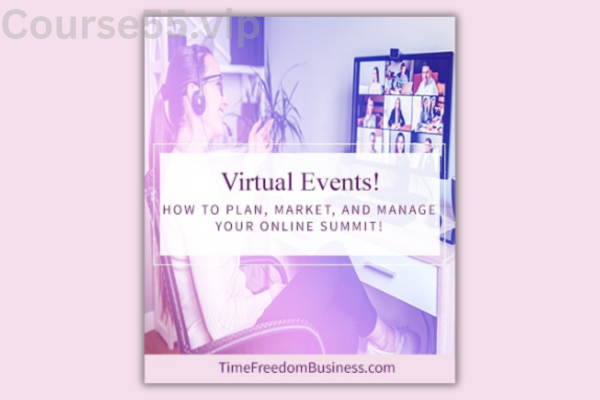-
×
 Understanding the Needs of the Dying: Bringing Hope, Comfort and Love to Life's Final Chapter By David Kessler - PESI
1 × $23.10
Understanding the Needs of the Dying: Bringing Hope, Comfort and Love to Life's Final Chapter By David Kessler - PESI
1 × $23.10 -
×
 Mindfulness-Based Stress Reduction for Teens By Gina Biegel - PESI
1 × $23.10
Mindfulness-Based Stress Reduction for Teens By Gina Biegel - PESI
1 × $23.10 -
×
 New Rules for Treating Trauma: Integrating Neuroscience for Resilience, Connection and Post-Traumatic Growth By Courtney Armstrong - PESI
1 × $23.10
New Rules for Treating Trauma: Integrating Neuroscience for Resilience, Connection and Post-Traumatic Growth By Courtney Armstrong - PESI
1 × $23.10 -
×
 Legal and Ethical Issues in Behavioral Health in South Carolina By Lois Fenner - PESI
1 × $23.10
Legal and Ethical Issues in Behavioral Health in South Carolina By Lois Fenner - PESI
1 × $23.10 -
×
 Orthopedic Challenges: Expert Strategies to Avoid Harm & Enhance Healing By William Mazzocco - PESI
1 × $23.10
Orthopedic Challenges: Expert Strategies to Avoid Harm & Enhance Healing By William Mazzocco - PESI
1 × $23.10 -
×
 The Marriage Reset: From Obligation To Adventure By Dani Johnson
1 × $31.00
The Marriage Reset: From Obligation To Adventure By Dani Johnson
1 × $31.00 -
×
 Writing Email Copy for B2B Companies By AWAI
1 × $23.10
Writing Email Copy for B2B Companies By AWAI
1 × $23.10 -
×
 Outbursts, Oppositional Defiance and Frustration in the Classroom: Self-Regulation Techniques to Reduce the Frequency, Severity and Duration of Problematic Behavior By Laura Ehlert - PESI
1 × $23.10
Outbursts, Oppositional Defiance and Frustration in the Classroom: Self-Regulation Techniques to Reduce the Frequency, Severity and Duration of Problematic Behavior By Laura Ehlert - PESI
1 × $23.10 -
×
 Project Kit Get Visible! How to Attract Your Soul Mate Clients & Grow Your Coaching Business with Ease By Melissa Ingold
1 × $23.10
Project Kit Get Visible! How to Attract Your Soul Mate Clients & Grow Your Coaching Business with Ease By Melissa Ingold
1 × $23.10 -
×
 Secrets of Chakra Wisdom By Deborah King
1 × $23.10
Secrets of Chakra Wisdom By Deborah King
1 × $23.10
Project Kit Virtual Events! How to Plan, Market, and Manage Your Online Summit By Melissa Ingold
$127.00 Original price was: $127.00.$23.10Current price is: $23.10.
SKU: C55vip.40970BbooZxhm
Category: Download
Tags: and Manage Your Online Summit, How to Plan, Market, Melissa Ingold, Project Kit Virtual Events
Review project kit for virtual events: How to plan, market, and manage your online summit – Digital Download!
Project Kit Virtual Events! How to Plan, Market, and Manage Your Online Summit By Melissa Ingold
Overview

Review Project Kit for Virtual Events: How to Plan, Market, and Manage Your Online Summit
In today’s digital era, where online connections dominate, virtual events have revolutionized how knowledge is shared, communities are fostered, and brands are promoted. Enter the virtual events project kit, a methodical approach that ensures every aspect of your online summit is carefully planned and executed. Guided by Melissa Ingold’s expertise, a successful virtual event is not merely about logistics; it creates an engaging experience that informs, entertains, and keeps attendees involved. This guide will walk you through essential steps, from goal setting to post-event evaluations, enhancing your understanding of how to make your online summit unforgettable. With careful preparation, a robust marketing strategy, and effective event management, you can transform your virtual event concept into reality and leave a lasting impact on all participants.
Establishing Clear Event Objectives
The first step in organizing a successful virtual summit is to establish a strong, clear vision. This will serve as a foundation, guiding every decision and aspect of the event. Why are you hosting the event? Whether it’s to enhance brand visibility, build valuable connections, or share insightful knowledge, clarifying your intentions upfront is crucial. This foundational step will steer all aspects of your planning and execution.
A great method to define your objectives clearly is by using the SMART approach:
-
Specific: Make your goals clear and precise.
-
Measurable: Have quantifiable metrics to track your progress.
-
Achievable: Ensure the goals are within your reach given your resources.
-
Relevant: Make sure they align with your broader strategic aims.
-
Time-Bound: Set a clear timeline for achieving these objectives.
For example, instead of saying, “We want to attract more attendees,” a SMART goal would be, “We want to increase attendee registrations by 30% over the next two months before the summit.” This method gives you a clear direction and helps measure success.
Also, it’s important to consider your audience when setting goals. Understanding their motivations will help ensure your event resonates with them and increases the chances of achieving your aims.
Gaining Insight into Your Audience’s Needs
Once you’ve established your event goals, it’s time to deeply understand the people you’re trying to connect with. This process goes beyond basic demographics and dives into their preferences, challenges, and interests. Who exactly are the people you want to attract to your event? What do they struggle with?
Thorough research is necessary before finalizing the event content. Using tools like surveys, social media insights, and industry data can provide a clearer picture of your audience’s habits and desires.
Effective Audience Research Techniques:
-
Surveys and Polls: Use tools like SurveyMonkey or Google Forms to directly gather insights. Ask questions about their interests and what they hope to gain.
-
Social Media Monitoring: Look for trends and discussions within groups or communities to identify what your target audience is talking about.
-
Study Competitors: Review similar events to see what worked for them, including their strategies for audience engagement.
Knowing your audience inside and out ensures that the content you create will be appealing and relevant, increasing the event’s impact.
Choosing the Right Event Structure
With your goals and audience in mind, the next step is determining the best format for your virtual event. The format plays a pivotal role in the attendee experience, influencing both engagement and satisfaction. Different formats each have their own strengths, so it’s important to choose the right one for your objectives.
Common Formats for Virtual Events:
-
Webinars: A great choice for delivering specific educational content to a wide audience, with room for Q&A.
-
Virtual Conferences: Featuring several speakers and sessions, these events offer diverse experiences but require careful planning to manage various sessions.
-
Workshops: A more interactive, smaller-scale event ideal for providing hands-on learning opportunities.
-
Networking Events: Focus on fostering connections between participants, encouraging interaction and discussion.
Your goals should help determine the most appropriate format. If education is your key objective, then a workshop might offer the best platform for interaction. Additionally, your audience’s preferences should play a role in this decision. The insights gathered during the research phase will assist in selecting a format that aligns with their expectations.
Picking the Best Platform for Your Event
Choosing the right virtual platform is a critical part of your planning process, as it forms the backbone of your event. The platform will determine how the event is experienced and how easy it is for both attendees and organizers to engage.
What to Look for in a Virtual Event Platform:
-
Technical Capabilities: Ensure the platform supports essential features like streaming, polls, chats, and breakout rooms.
-
Ease of Use: Opt for a platform with an intuitive interface for both organizers and participants, ensuring a smooth experience for all.
-
Engagement Tools: Platforms offering interactive features like Q&A sessions and networking rooms can keep attendees engaged.
-
Analytics: Platforms with built-in analytics can provide valuable insights into participant behavior and overall event success.
-
Support Services: Choose a platform that offers excellent customer support and troubleshooting assistance before and during the event.
Platforms like Zoom, Hopin, and WebEx each have unique features that may cater to different event needs. Evaluate each based on your specific requirements to find the best fit.
Creating an Effective Event Schedule
Once you’ve decided on the format and platform, the next step is designing a detailed event schedule. A well-structured agenda ensures that everything runs smoothly and that attendees stay engaged. A carefully planned agenda helps attendees know what to expect, keeping the event organized and efficient.
Key Components of a Solid Event Schedule:
-
Session Times: Provide clear start and end times for each session, allowing attendees to plan accordingly.
-
Speaker Information: Include details about the speakers and their expertise, so attendees know who they will be hearing from.
-
Networking Opportunities: Plan for breaks between sessions to give participants a chance to connect and network.
-
Interactive Sessions: Schedule opportunities for Q&A or polls to keep attendees actively involved.
For example, your agenda might look like this:
| Time | Session Title | Speaker | Type |
|---|---|---|---|
| 10:00 – 10:30 | Opening Address | Dr. John Smith | Keynote |
| 10:30 – 11:15 | Expert Panel: Trends | Panel of Experts | Panel |
| 11:15 – 11:30 | Networking Break | Networking | |
| 11:30 – 12:00 | Skills Workshop | Ms. Jane Doe | Workshop |
A clear, structured agenda makes for a seamless experience, helping attendees stay informed and engaged.
Building Buzz for Your Virtual Event
Successful marketing is key to the success of your virtual event. Promoting your summit effectively helps build anticipation and attracts participants. The more people know about the event, the higher the chances of a successful turnout.
Marketing Strategies to Promote Your Event:
-
Email Campaigns: Regular newsletters to your subscriber list can generate interest and provide key event updates.
-
Social Media Engagement: Promote the event across the platforms where your audience is most active, using engaging visuals and countdowns.
-
Partnering with Influencers: Collaborate with industry influencers to help spread the word about your event to a broader audience.
-
Early Registration Discounts: Encourage sign-ups early with limited-time offers or discounts.
-
Content Marketing: Share blog posts or articles related to the event’s themes to spark interest and educate your audience.
An effective marketing plan will not only draw in attendees but also keep them excited about participating.
Maximizing Engagement During the Event
Engaging participants is essential to ensuring they stay involved throughout the event. Virtual events can feel detached, but with the right engagement strategies, you can create an environment that feels connected and interactive.
Methods to Increase Engagement:
-
Polls and Surveys: Use interactive polls throughout the event to encourage participation and keep attendees engaged.
-
Breakout Sessions: Host smaller discussions or workshops that allow attendees to interact more personally.
-
Gamification: Incorporate elements like contests or rewards to motivate and involve attendees.
-
Networking Rooms: Create virtual spaces where attendees can meet and converse in smaller groups.
These interactive methods create a dynamic experience that helps maintain attendee interest and interaction.
Following Up After the Event
Once your virtual summit concludes, it’s important to follow up with attendees to maintain their interest and solidify your relationships. This phase is just as critical as the planning process, as it extends the value of your event beyond the actual day.
Strategies for Post-Event Engagement:
-
Collect Feedback: Send out surveys to gather participant feedback, helping you improve for future events.
-
Provide Recordings: Share recorded sessions so attendees can revisit key content.
-
Share Additional Resources: Offer supplementary materials like e-books, white papers, or guides based on the event content.
-
Maintain Engagement: Consider hosting follow-up events or creating a community for continued interaction.
These efforts help turn a one-time event into a lasting relationship with your audience.
Evaluating Your Event’s Performance
Finally, assessing the success of your virtual event is crucial. Reviewing the data will help you understand how well you met your goals and identify areas for improvement.
Key Metrics to Measure Success:
-
Registration and Attendance: Track how many people registered and how many actually attended.
-
Engagement: Look at participation in polls, discussions, and Q&A sessions.
-
Post-Event Feedback: Analyze survey results to identify strengths and areas for improvement.
-
Lead Conversion: Track how many leads were generated and their level of engagement after the event.
By reviewing these metrics, you can refine your approach for future events and ensure continued success.
Conclusion
Organizing and executing a virtual event can be a complex but highly rewarding process. With clear objectives, a deep understanding of your audience, and effective engagement strategies, your virtual summit can provide lasting value for attendees. By following Melissa Ingold’s expert guidance and using insights to refine your approach, you can create an event that exceeds expectations and builds a stronger community. Careful preparation, smart marketing, and seamless execution will leave a significant impact on your brand’s growth and success in the digital world.
Frequently Asked Questions:
Business Model Innovation: We operate a group buying strategy, allowing participants to share costs and access popular courses at reduced prices. This model benefits individuals with limited financial resources, despite concerns from content creators about distribution methods.
Legal Considerations: The legality of our operations involves complex issues. Although we don’t have explicit permission from course creators to resell their content, there are no specific resale restrictions stated at the time of purchase. This ambiguity creates an opportunity for us to provide affordable educational resources.
Quality Control: We ensure that all course materials purchased are identical to those offered directly by the creators. However, it’s important to understand that we are not official providers. As such, our offerings do not include:
– Live coaching calls or sessions with the course author.
– Access to exclusive author-controlled groups or portals.
– Membership in private forums.
– Direct email support from the author or their team.
We aim to reduce the cost barrier in education by offering these courses independently, without the premium services available through official channels. We appreciate your understanding of our unique approach.
Be the first to review “Project Kit Virtual Events! How to Plan, Market, and Manage Your Online Summit By Melissa Ingold” Cancel reply
You must be logged in to post a review.













Reviews
There are no reviews yet.